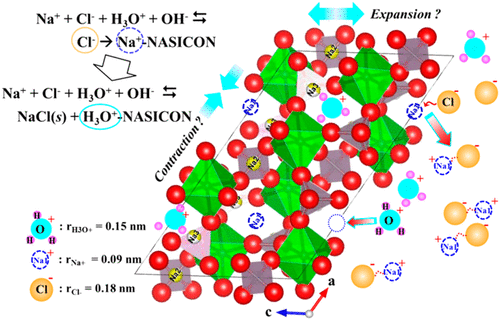Progressive Assessment on the Decomposition Reaction of Na Superionic Conducting Ceramics
- Journal
- ACS Applied Materials & Interfaces
- Vol
- 9(1)
- Page
- 304-310
- Year
- 2017
- Link
- https://pubs.acs.org/doi/full/10.1021/acsami.6b09316 534회 연결
The successful analysis on the microstructure of Hong-type Na superionic conducting (NASICON) ceramics revealed that it consists of several heterogeneous phases: NASICON grains with rectangular shapes, monoclinic round ZrO2 particles, grain boundaries, a SiO2-rich vitrified phase, Na-rich amorphous particles, and pores. A dramatic microstructural evolution of NASICON ceramics was demonstrated via an in situ analysis, which showed that NASICON grains sequentially lost their original morphology and were transformed into comminuted particles (as indicated by the immersion of bulk NASICON samples into seawater at a temperature of 80 °C). The consecutive X-ray diffraction analysis represented that the significant shear stress inside NASICON ceramics caused their structural decomposition, during which H3O+ ions occupied ceramic Na+ sites (predominantly along the (1̅11) and (1̅33) planes), while the original Na+ cations came out in the (020) plane of the NASICON ceramic crystalline structure. The results of time-of-flight secondary-ion mass spectrometry analysis confirmed that large concentrations of Cl− and Na+ ions were distributed across the surface of NASICON ceramics, leading to local densification of a 20 μm thick surface layer after treatment within seawater solution at a temperature of 80 °C.

